Artículos SCI
2015
2015
Química de Superficies y Catálisis - Fotocatálisis Heterogénea: Aplicaciones
Synthesis and application of layered titanates in the photocatalytic degradation of phenol
Ivanova, S; Penkova, A; Hidalgo, MD; Navio, JA; Romero-Sarria, F; Centeno, MA; Odriozola, JAApplied Catalysis B: Environmental, 163 (2015) 23-29
Show abstract ▽
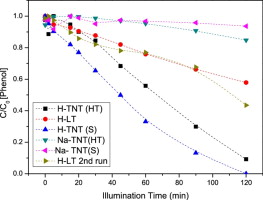
This study proposes a direct synthetic route to single titanate sheets through the mild and versatile conditions of the “chimie douce”. The stages of the production include the complexation of the titanium alkoxide precursor by benzoic acid, the formation of titanium oxo-clusters and their controlled transformation into single sheet titanates during the hydrolysis stage. The resulted material appears to be an excellent precursor for self-organized TiO2 nanotubes formation which presents an excellent activity as photocatalyst in the photo-degradation of phenol.
Febrero, 2015 | DOI: 10.1016/j.apcatb.2014.07.048
Reactividad de Sólidos
Influence of the Processing Route on the Carbon Nanotubes Dispersion and Creep Resistance of 3YTZP/SWCNTs Nanocomposites
Castillo-Rodriguez, M; Munoz, A; Morales-Rodriguez, A; Poyato, R; Gallardo-Lopez, A; Dominguez-Rodriguez, AJournal of the American Ceramic Society, 98 (2015) 645-653
Show abstract ▽
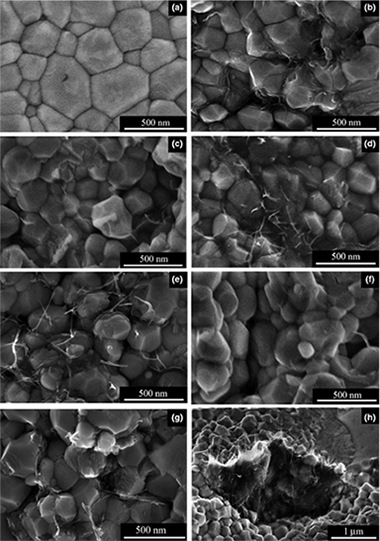
3YTZP matrix composites containing 2.5 vol% of single-walled carbon nanotubes (SWCNT) were fabricated by Spark Plasma Sintering (SPS) at 1250°C, following different processing routines with the aim of optimizing the SWCNTs dispersion throughout the ceramic matrix. Microstructural characterization of the as-fabricated samples has been performed by means of scanning electron microscopy (SEM). The specimens have been crept at 1200°C to correlate creep resistance and SWCNTs distribution. There are no creep experimental results on these nanocomposites reported in literature. Mechanical results show that the incorporation of SWCNTs into a 3YTZP matrix produces an increase in the strain rate at high temperature with respect to monolithic zirconia. The creep resistance of these nanocomposites decreases with the improvement of the SWCNTs dispersion, where a smaller SWCNTs agglomerate size and consequently a higher concentration of carbon nanotubes surrounding the 3YTZP grain boundaries is found. This fact indicates that SWCNTs act as a lubricant making grain-boundary sliding easier during deformation of these composites.
Febrero, 2015 | DOI: 10.1111/jace.13348
Materiales de Diseño para la Energía y Medioambiente
Long-Chain Polyhydroxyesters from Natural Occurring Aleuritic Acid as Potential Material for Food Packaging
Benitez, JJ; Heredia-Guerrero, JA; Guzman-Puyol, S; Dominguez, E; Heredia, ASoft Materials, 13 (2015) 5-11
Show abstract ▽
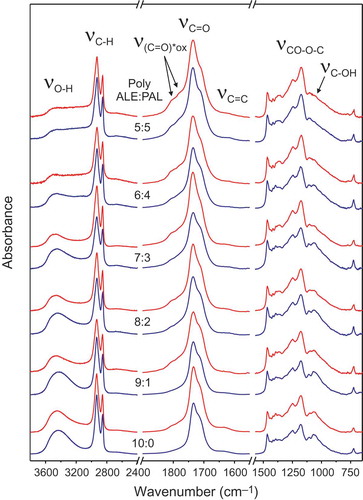
Fatty polyhydroxyesters (C≥16) are present in nature as barrier polymers like cutin in some protective tissues of higher plants. The mimicry of these biopolymers is regarded as a strategy to design nontoxic and fully biodegradable food packaging films and coatings. To obtain cutin inspired materials we have used a natural occurring polyhydroxylated monomer like aleuritic (9,10,16-trihydroxypalmitic) acid and a direct and scalable synthesis route consisting in the noncatalyzed melt-condensation polymerization in air. To reduce the number of hydroxyl groups and to increase hydrophobicity, palmitic acid has been used as a capping agent. Aleuritic-palmitic polyhydroxyesteres films have been obtained and characterized.
Enero, 2015 | DOI: 10.1080/1539445X.2014.993476
Materiales Nanoestructurados y Microestructura
Biotribological behavior of Ag–ZrCxN1−x coatings against UHMWPE for joint prostheses devices
Calderon, SV; Sanchez-Lopez, JC; Cavaleiro, A; Carvalho, SJournal of the Mechanical Behavior of Biomedical Materials, 41 (2015) 83-91
Show abstract ▽
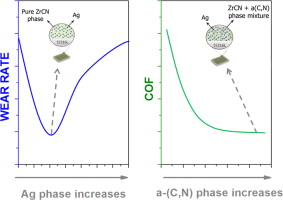
This study aims to evaluate the structural, mechanical and tribological properties of zirconium carbonitrides (ZrCxN1−x) coatings with embedded silver nanoparticles, produced with the intention of achieving a material with enhanced multi-functional properties, including mechanical strength, corrosion resistance, tribological performance and antibacterial behavior suitable for their use in joint prostheses. The coatings were deposited by direct current (DC) reactive magnetron sputtering onto 316 L stainless steel, changing the silver content from 0 to 20 at% by modifying the current density applied to the targets. Different nitrogen and acetylene gas fluxes were used as reactive gases. The coatings revealed different mixtures of crystalline ZrCxN1−x, silver nanoparticles and amorphous carbon phases. The hardness of the films was found to be mainly controlled by the ratio between the hard (ZrCxN1−x) and soft (Ag and amorphous carbon) phases in the films, fluctuating between 7.4 and 20.4 GPa. The coefficient of friction, measured against ultra-high molecular weight polyethylene (UHMWPE) in Hank’s balanced salt solution with 10 g L−1albumin, is governed by the surface roughness and hardness. The UHMWPE wear rates were in the same order of magnitude (between 1.4 and 2.0×10−6 mm3 N−1 m−1), justified by the effect of the protective layer of albumin formed during the tests. The small differences were due to the hydrophobic/hydrophilic character of the surface, as well as to the silver content.
Enero, 2015 | DOI: 10.1016/j.jmbbm.2014.09.028
Reactividad de Sólidos
Uniform, luminescent Eu: LuF3 nanoparticles
Becerro, AI; Gonzalez-Mancebo, D; Ocana, MJournal of Nanoparticle Research, 17 (2015) 58
Show abstract ▽
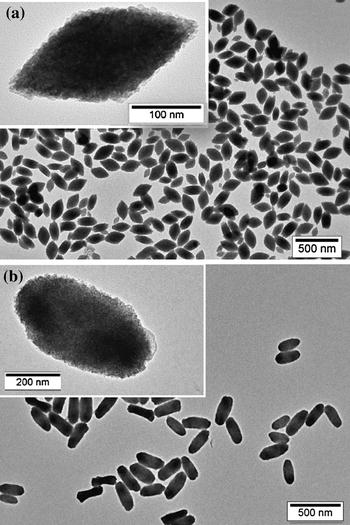
A simple procedure for the synthesis of orthorhombic, uniform, LuF3 particles with two different morphologies (rhombus- and cocoon-like) and nanometer and sub-micrometer size, respectively, is reported. The method consists in the aging, at 120 °C for 2 h, a solution containing [BMIM]BF4 ionic liquid (0.5 mL) and lutetium acetate (in the case of the rhombi) or lutetium nitrate (in the case of the cocoons) (0.02 M) in ethylene glycol (total volume 10 mL). This synthesis method was also adequate for the synthesis of Eu3+-doped LuF3 particles of both morphologies, whose luminescence properties were investigated in detail. The experimental observations reported herein suggest that these materials are suitable phosphors for optoelectronic as well as in vitro biotechnological applications.
Enero, 2015 | DOI: 10.1007/s11051-015-2874-z
- ‹ anterior
- 259 of 420
- siguiente ›














